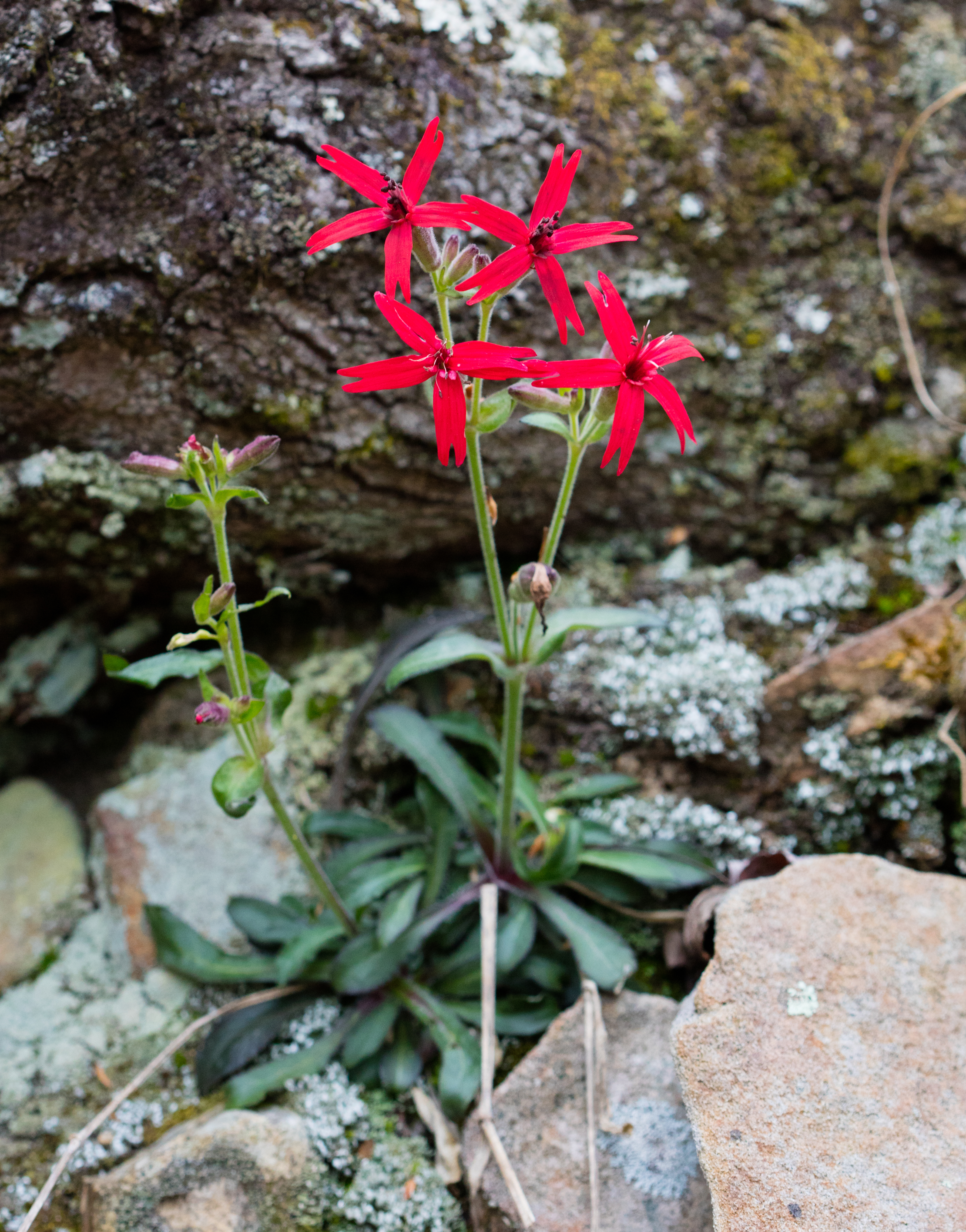Fire pink
(Silene virginica)

Description
Silene virginica, the fire pink, is a wildflower in the pink family, Caryophyllaceae. It is known for its distinct brilliant red flowers. Each flower is approximately five centimeters in diameter and composed of five notched, brilliant red petals which extend into a long tube. It is a small (20–80 cm tall), short-lived perennial (2–3 years), with lance shaped leaves. Its stems, and the bases of the flowers, are covered in short sticky hairs. Fire pink begins blooming in late spring and continuing throughout the summer. It is sometimes grown in wildflower, shade, and rock gardens. Fire pink grows in open woods and rocky deciduous slopes in eastern North America, ranging as far north as extreme southern Ontario. It is protected as a state endangered species in Wisconsin and Florida, and as a state threatened species in Michigan. Fire pink's principal pollinator is the ruby-throated hummingbird (Archilochus colubris), which is attracted by the flowers bright red petals and sugary nectar. There are two recognized varieties of fire pink. Most plants of this species are classified as Silene virginica var. virginica, however an endemic variety occurs in West Virginia called Silene virginica var. robusta. Silene is a genus of flowering plants in the family Caryophyllaceae. Containing nearly 900 species, it is the largest genus in the family. Common names include campion and catchfly. Many Silene species are widely distributed, particularly in the northern hemisphere. Members of this genus have been the subject of research by preeminent plant ecologists, evolutionary biologists, and geneticists, including Charles Darwin, Gregor Mendel, Carl Correns, Herbert G. Baker, and Janis Antonovics. Many Silene species continue to be widely used to study systems, particularly in the fields of ecology and evolutionary biology. The genus has been used as a model for understanding the genetics of sex determination for over a century. Silene species commonly contain a mixture of hermaphroditic and female (or male-sterile) individuals (gynodioecy), and early studies by Correns showed that male sterility could be maternally inherited, an example of what is now known as cytoplasmic male sterility. Two independent groups of species in Silene have evolved separate male and female sexes (dioecy) with chromosomal sex determination that is analogous to the system found in humans and other mammals.
Taxonomic tree:







